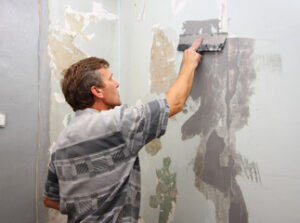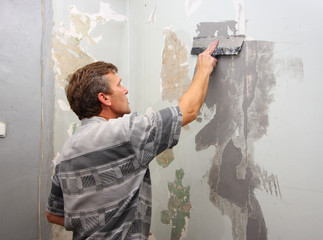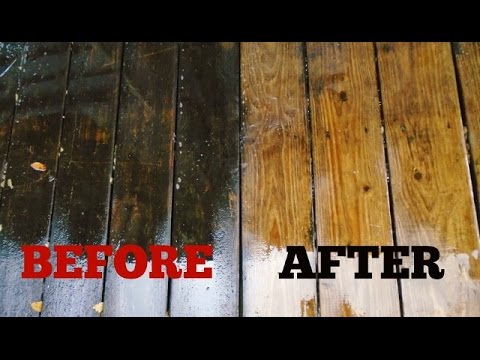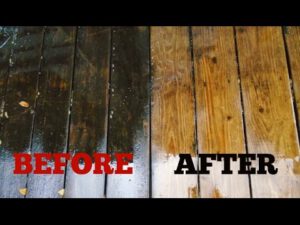Stucco Repair Philadelphia is a fairly expensive project if extensive damage has occurred. The exact costs will vary depending on the extent of the work and materials needed.
Use a hammer and cold chisel to chip away loose stucco. Protect yourself with safety goggles and heavy gloves. Cut away the rusting metal lath and torn house wrap around the damaged area.
Stucco is a durable material that has been used for thousands of years to add beauty, insulation, and longevity to building structures. However, it is not immune to defects. Cracks are a natural part of the lifespan of any exterior wall and should be addressed as soon as possible to minimize the potential damage.
The first thing to do when dealing with cracks is to chip away any loose pieces of stucco and remove dirt and algae from the area. Make sure to wear work gloves and safety glasses to protect yourself from flying debris when doing this step.
When applying the caulking, use a trowel to match the texture and appearance of the surrounding stucco. This will ensure a smooth blend and allow the caulking to expand or contract with temperature changes without further cracking. After the caulk has cured, paint it with a water-based paint to complete the repair. It is important to note that when you touch the repaired crack, it will still feel flexible. This is normal and attests to the strength of the caulk. If it feels stiff or rigid, this may indicate that the underlying problem is more severe and needs to be looked at further.
Stucco cracks are natural and will happen with time, especially in older homes. It is essential to do a yearly inspection to catch any defects early on and take corrective action as needed. However, improper repairs can exacerbate the rate of cracking and lead to more serious structural issues. It is essential to use only approved products and methods during the repair process. If you do not do this, you will find that the crack will open up again quickly, which can also exacerbate the growth of mold.
Holes
Holes in stucco are an easy fix and should be repaired immediately to prevent further damage. Most of the time, they are caused by water or moisture that has penetrated the stucco and the protective layer of tar paper. Moisture is very dangerous to a stucco wall and should be prevented at all costs, especially in cold-climate areas. If moisture gets trapped in a wall, it can lead to structural issues that will be costly to repair.
In addition to a hammer and chisel, the most important tool you will need for this job is a wire brush. This tool can be used to clean the hole and the surrounding area. Make sure you brush the entire area, including around the edges of the hole, to ensure that there is no dirt or debris lodged inside the holes.
Once the area has been cleaned, you will need to apply high-quality caulking around the hole to create a seal and prevent moisture from penetrating the hole again. Once the caulking has cured, you can then proceed to apply a small amount of stucco patch material to the hole. This can be either a pre-mixed compound or sanded stucco. It is very important to use a material that contains acrylic additives. This will help the patch material react with the surrounding expansion and contraction of the stucco.
If you are able to, use a rubber float to smooth out the patch and blend it with the existing texture. Once the stucco patch dries, you can paint it a color that matches the surrounding walls.
If the hole is a result of poor construction, you may need to replace the damaged section of your wall. This is especially true if the hole was caused by an impact. This is because the force of the impact can cause the structural framing to weaken, leading to future cracks and holes in your stucco. If you suspect that your stucco is not in good condition, contact a professional contractor to discuss the best solution for your home.
Peeling Paint
If your stucco is peeling, it is usually a sign that the surface of the wall has lost its bond with either the underlayers or lath. This can occur when the weather is cold and damp or when there are problems with the mortar mix. Either way, it is not good for the structure of your home and should be fixed immediately.
It is important to understand that while it is possible to repair small hairline cracks in stucco yourself, if you are not sure what caused the problem, it may be more serious than you think and should be left to a professional. In some cases, such as spider cracking (where the base coat under the top coat did not cure properly), it is probably necessary to completely reapply the stucco.
The first step in repairing peeling paint is to remove any loose pieces of stucco that are coming off. This is usually not difficult, but if the peeling has gotten severe, you may need to use a wire brush to loosen any remaining dirt. It is also a good idea to clean the entire area that is being repaired with a pressure washer to ensure that any remaining dirt or mildew is removed.
Once the area has been cleaned, a pre-mixed stucco patch can be troweled over the damaged surface. It is best to follow the instructions on the package carefully to ensure that you don’t mix up any ingredients accidentally. The patching product should be applied as thinly as possible to avoid any unsightly lines in the finished wall. It is also a good idea to add some pigment to the stucco mix in order to match it to the existing color of the wall.
Once the patch has dried, it should be sanded down with a sanding block to ensure that the new material is smooth. A textured coating can be added at this point, if desired. It is best to wait for the patch to fully dry before painting, as paint will not adhere well to wet stucco.
Water Damage
When water gets into a wall, it can soak insulation, cause mold, or lead to wood rot. This is why it is important to inspect your stucco regularly and have any leaks or water penetrations repaired as soon as possible.
Look for cracks around windows or other fixtures, as well as any discoloration that could indicate rotting wood behind the stucco. You may also want to inspect for stains or bubbles near the bottom edges of your walls, as water tends to flow down and cause damage there.
If you notice water intrusion into your stucco, it is a good idea to call in the professionals for a full inspection and repair. This will usually involve removing any damaged sections of stucco, inspecting and cleaning any mold or wood rot, installing a new drainage plane material to prevent more water intrusion, adding a vapor barrier, modifying weep screeds, or patching the area.
Stucco is an excellent choice for homes in coastal areas, as it resists saltwater corrosion much better than other materials. However, even in a mild climate, water intrusion into the wall can be a major problem. There are several factors that can cause this, including salt water or wind-driven rain, improper flashing, expansion or contraction of the stucco, and the growth of vegetation or plants on the surface of the home.
It is also very important to check the caulking around doors and windows, as this will seal against moisture penetration and leaks. If you find that the caulking is cracked or missing, it will need to be replaced before any stucco work can take place.
If the water damage is severe, it will require more extensive work to correct it. Stucco remediation will be required, which means removing the existing stucco, repairing or replacing any rotted sheathing or framing, and then rebuilding the system, starting with a proper WRB and progressing outward in either masonry or EIFS.
It is important to keep in mind that stucco can be beautiful and that water damage can sometimes occur without any real issue. However, if it goes untreated for too long, it can start to create major problems and impact the value of your home. Stucco repair can be relatively inexpensive and easy to do if you catch the problems before they get too bad.


